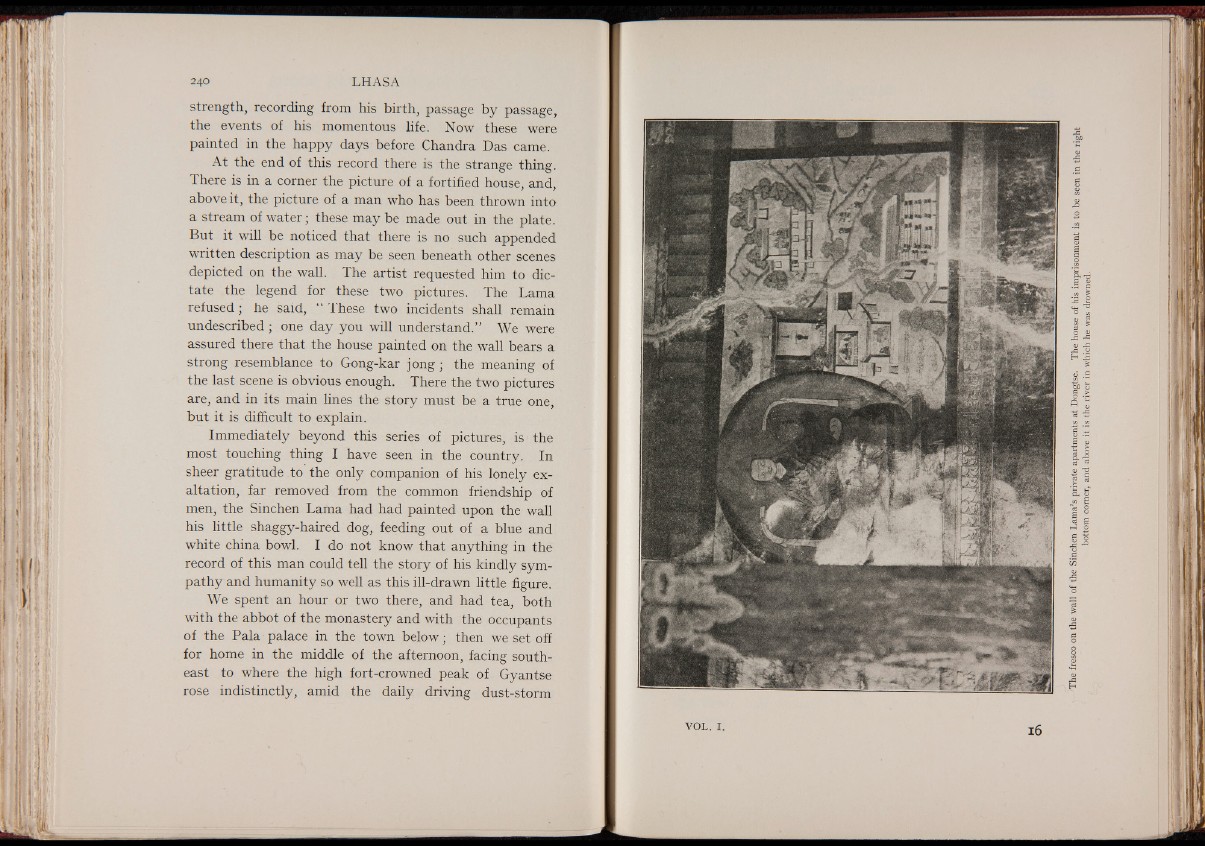
strength, recording from his birth, passage by passage,
the events of his momentous life. Now these were
painted in the happy days before Chandra Das came.
At the end of this record there is the strange thing.
There is in a corner the picture of a fortified house, and,
above it, the picture of a man who has been thrown into
a stream of water; these may be made out in the plate.
But it will be noticed that there is no such appended
written description as may be seen beneath other scenes
depicted on the wall. The artist requested him to dictate
the legend for these two pictures. The Lama
refused; he said, “ These two incidents shall remain
undescribed; one day you will understand.” We were
assured there that the house painted on the wall bears a
strong resemblance to Gong-kar jon g ; the meaning of
the last scene is obvious enough. There the two pictures
are, and in its main lines the story must be a true one,
but it is difficult to explain.
Immediately beyond this series of pictures, is the
most touching thing I have seen in the country. In
sheer gratitude to the only companion of his lonely exaltation,
far removed from the common friendship of
men, the Sinchen Lama had had painted upon the wall
his little shaggy-haired dog, feeding out of a blue and
white china bowl. I do not know that anything in the
record of this man could tell the story of his kindly sympathy
and humanity so well as this ill-drawn little figure.
We spent an hour or two there, and had tea, both
with the abbot of the monastery and with the occupants
of the Pala palace in the town below; then we set off
for home in the middle of the afternoon, facing southeast
to where the high fort-crowned peak of Gyantse
rose indistinctly, amid the daily driving dust-storm
v o l . I